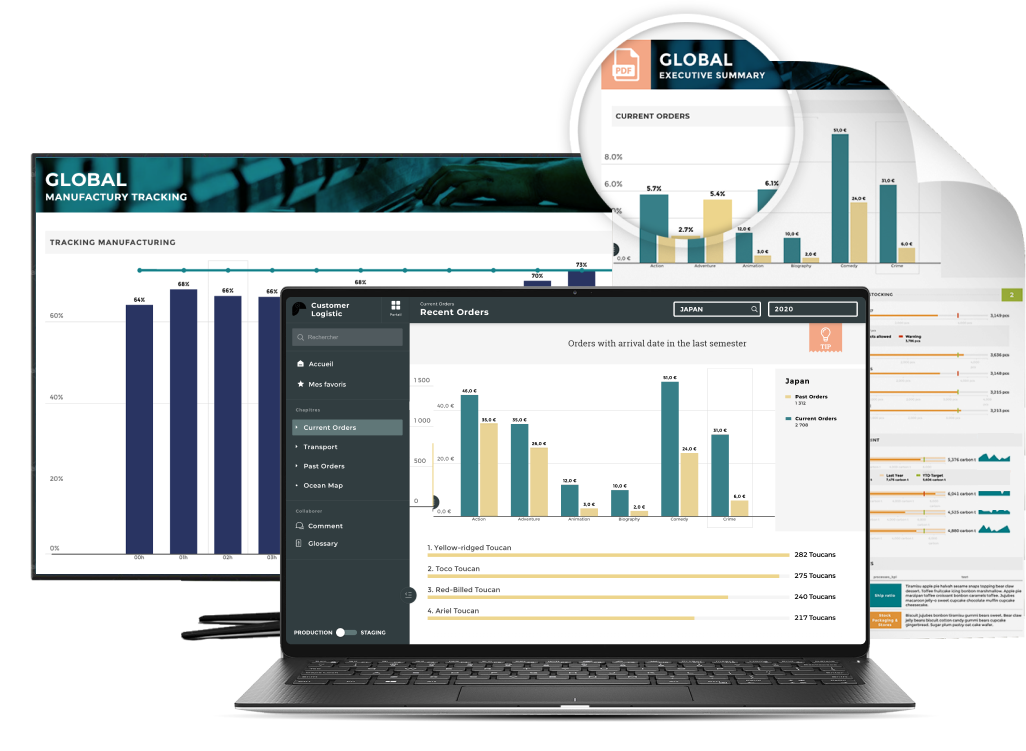You measure your business's profits and revenue with a variety of metrics. Net income, gross revenue, and net revenue are some of the common metrics for this.
But how do these measurements differ, and which one is the best for assessing the financial health of your company?
Each of these measurements is important, so you should understand their significance and what they can tell you about your business.
Difference between gross and net
An item's gross value is the whole amount, while its net value refers to the amount that remains after some deductions have been made. A business with a revenue of $5 million and expenses of $1 million has a gross revenue amount of $5 million and a net income amount of $4 million.
Several items on the financial statements are referred to as gross:
- Gross Revenue: Revenue before deducting any items such as returns and refunds.
- Gross Assets: Total assets minus any deductions.
- Gross Margin: Gross profit divided by revenue shows gross profit as a percentage.
Financial statements show net items such as:
- Net Assets: An asset's value after certain liabilities have been subtracted.
- Net Earnings: The remaining amount after all expenses are deducted from revenues.
- Net Margin: Net income divided by revenue to show net income as a percentage of revenue.
Difference between revenue and income
A business' revenue is the total amount of money it earns from its sales of goods and services. Since it is added to the top of the income statement, it is also referred to as the top line.
A business' revenue is the cash it generates before deducting its expenses. It shows how well a business can generate sales, but it doesn't take into account operating efficiencies, which can affect the bottom line. Top-line growth refers to a company's increase in revenue or gross sales.
The term income, whether gross or net, refers to a company's total profit or earnings. Whenever analysts and investors talk about a company's income, they are referring to the company's net income or profit. In some cases, the terms income and revenue are synonymous; however, net income represents a person's total earnings after subtracting any other incomes and expenses.
Let’s consider the following revenue vs. income example:

Apple reported revenue of $260 billion in 2019. That represents a 2% drop year-over-year. The company also posted $55.3 billion in net income for the same period, a decrease of 7% from the previous year.
Based on the above, it can be seen that Apple's net income is lower than its total revenue. This is because the net income includes the expenses Apple incurred during that period. This example clearly shows the difference between revenue and income when referring to the financials of a business.
Comparing gross revenue, net revenue and net income
A business should always know how successful it is at any given time. As a result of this, businesses should evaluate their profitability as well as their ability to control expenses. A business must also know the costs associated with doing business, such as the cost of goods sold, employee payroll, rent, utility bills, and office supplies.
In most cases, investors are more interested in a company's gross revenue because it demonstrates its ability to generate sales and its potential for growth. For new SaaS offerings, tracking your gross revenue will be extremely important to determine the viability of your new subscription service.
Even so, it does not mean that you should forget about net revenue and income, as these provide the most accurate information on cost and value.
|
Gross Revenue |
Net Revenue |
Net income |
|
|
Definition |
A company's gross revenue is its revenue before expenses. |
A company's net revenue represents the total amount it makes from its operations minus any adjustments such as refunds, returns, and discounts. |
A company’s net income is its profit after deducting expenses and other allowances. It is the total amount of profit or loss after expenses. |
|
Indicates |
Shows the amount of money you’ve generated from selling goods and services |
Give you a more complete picture of your revenue |
Tells whether your business is profitable or not |
|
Formula |
(price per product or service) x (total number of products or services sold) |
gross revenue - discounts - returns - commissions |
net revenues – total expenses |
|
Example |
For example, if your company has 5000 subscribers at $10/month each, then your gross revenue for that month will be $50,000 ($10 × 5000). |
Suppose 20 of your subscriptions were canceled mid-month with a full refund. Net revenue is $49,800 ($50,000 - $200). |
If your cost of doing business is $20,000, your net income is $29,800 ( $49,000 - $20,000) |
|
Also known as |
Topline |
Bottomline |
It is crucial to track them all for strategic and operational decision-making. Businesses can know where most of their money is spent with a proper understanding of these three metrics. By reducing unnecessary costs, businesses can increase profitability. The best way to track and monitor these metrics is with a powerful analytic solution that provides easy-to-understand SaaS dashboards and analytics.





